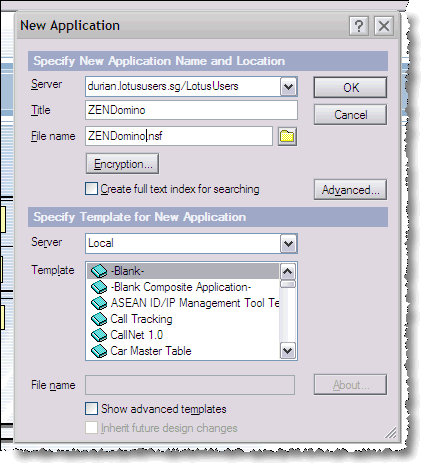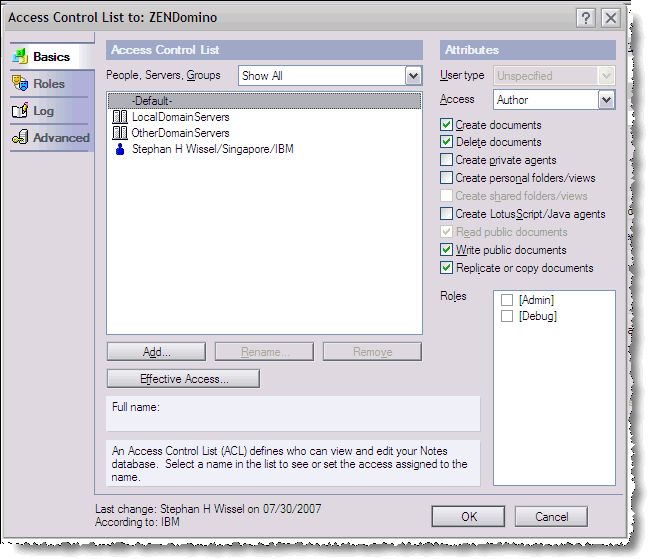Domino Application - ZEN style
So let us assume I know HTTP/HTML very well. I don't know JavaScript (and I might want to use the app with devices that don't support JavaScript). I don't know Java or LotusScript. I have a limited understanding of @Formula (some basic stuff like @Command([FileSave]) or @Trim(@ThisValue) or @if(...)). I also have a friend who does the CSS for me. I have an excellent understanding however how Domino does forms, how Author and Reader fields work and how Domino URLs are constructed (which resemble some kind of REST API, so learning them with my background in HTTP was quite easy). How far can I go?
There are quite some steps involved. But they are less than it looks like.
Step 1: Create the database

Step 2: Set the ACL

Since I want anybody to be able to use this little gem, I set default access to Author. Please --> In your environment follow best practices and set it to -No Access- and have an appropriate access group... but that is what the Administrator will do for you anyway. Just keep in mind to create the [Debug] role (You might not understand it but you liked the idea in that SnTT post).
Read more
Posted by Stephan H Wissel on 30 July 2007 | Comments (3) | categories: Show-N-Tell Thursday
